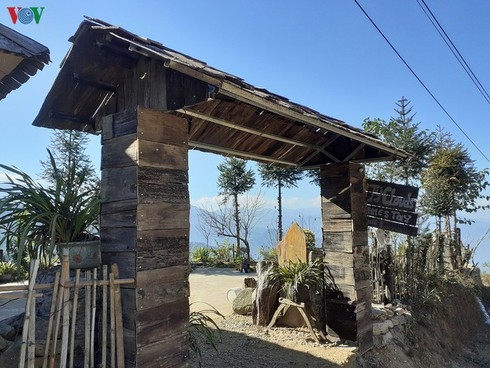Visitors who come to enjoy the beauty of the natural scenery in this “cloud paradise in northwest Vietnam,” have helped boost the local economy and improve the lives of the local people.
In the past, the resort town of Sa Pa was the undisputed choice of Lao Cai tourism. But more tourists are gravitating to Y Ty, also justly famous for its primeval forests, terraced fields, and ethnic minority culture. The rainy season is prime time for Y Ty’s Ong Chua (Queen Bee) waterfall, dragon waterfall, three-storey waterfall, Phin Ngan cave, and Pu Ta Leng peak. Y Ty’s terraced rice fields are particularly photogenic in the rice season in late September.
    |
 |
|
Tourism is contributing to poverty reduction in Y Ty commune. |
Y Ty is a poor border commune. To remedy the situation, Lao Cai province has declared tourism a spearhead sector for Y Ty’s long-term economic development and is marshalling resources to promote local tourism.
Many Y Ty households are offering homestay services. People are trained how to welcome and communicate with guests and protect the local environment.
Pham Van Tam, Chairman of the Y Ty communal People’s Committee, said, “Last year we received about 15,000 visitors, more than 100 of them foreigners. This is a positive result of local economic restructuring. As a result, the number of poor households has dropped 15%.”
Maintaining and promoting local ethnic culture is the key to sustainable tourism development in Y Ty. For example, the “Going to the field” festival, the Put Tong ritual - a fire dance performed by Red Dao shamans, and the Kho Gia Gia, a traditional festival of the Ha Nhi ethnic group to pray for good crops, are being advertised to attract more tourists.
Ly Xa Xuy of Mo Phu Chai hamlet was one of the first people to do community-based tourism in Y Ty. Since graduating from the National University of Civil Engineering, Xuy has been promoting local culture as a way to develop sustainable tourism.
“Residents and authorities should recognize the importance of local cultural values. The local administration should increase communications promoting cultural preservation,” he said.
Since Bat Xat district began combining tourism development with cultural preservation and promotion, it has welcomed 69,000 tourists and earned 860,000 USD from tourism. Bat Xat has been approved to become part of the Sa Pa national tourist area, expanding the opportunity for local tourism development.
Nguyen Quang Binh, Deputy Chairman of the Bat Xat district People’s Committee, said “Lao Cai is zoning tourist areas in which tourism development will be linked to cultural and environmental preservation. Eco-tourism and community-based tourism will be the key to boosting people’s incomes.”
Tapping Y Ty’s tourism potential will create a tourist triangle linking Lao Cai, Sa Pa, and Y Ty.
Source: VOV5